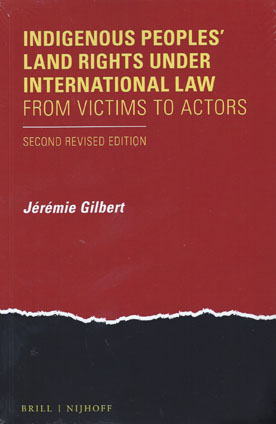
This book addresses the right of indigenous peoples to live, own and use their traditional territories. Whilst a profound cultural and social relationship with land and territories characterizes indigenous peoples’ cultures, they have been and are repeatedly deprived of their lands.
This book analyses how international law addresses indigenous peoples’ rights to live on their traditional territories. Through its meticulous and wide-ranging examination of the interaction between international law and indigenous peoples’ land rights, the work explores several burning issues such as collective rights, self-determination, property rights, cultural rights and restitution of land.
In assessing the international legal approach to land rights the book delves into the notion of past violations and the role of international law in providing for remedies, reparation and restitution. It also argues that there is a new phase in the relationship between States, indigenous peoples and private actors, such as corporations, in the making of territorial agreements.
Based on its analysis of indigenous peoples’ land rights under international law, this book proposes an original theory regarding the legal status of indigenous peoples. It explores how indigenous peoples have been the victims of the rules governing title to territory since the inception of international law, and how under the current human rights regime, indigenous peoples have now gained the status of actors of international law.
Based on such analysis it explores how international law can play an important role in supporting a new approach to development and globalization in supporting the rights of indigenous peoples over their lands and natural resources as an essential element of their future.